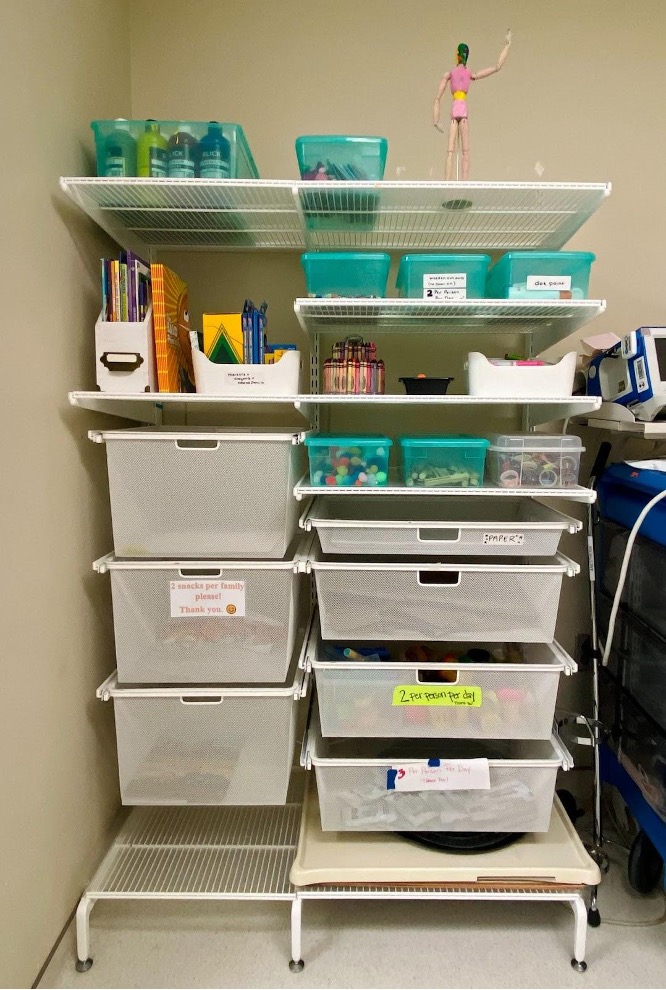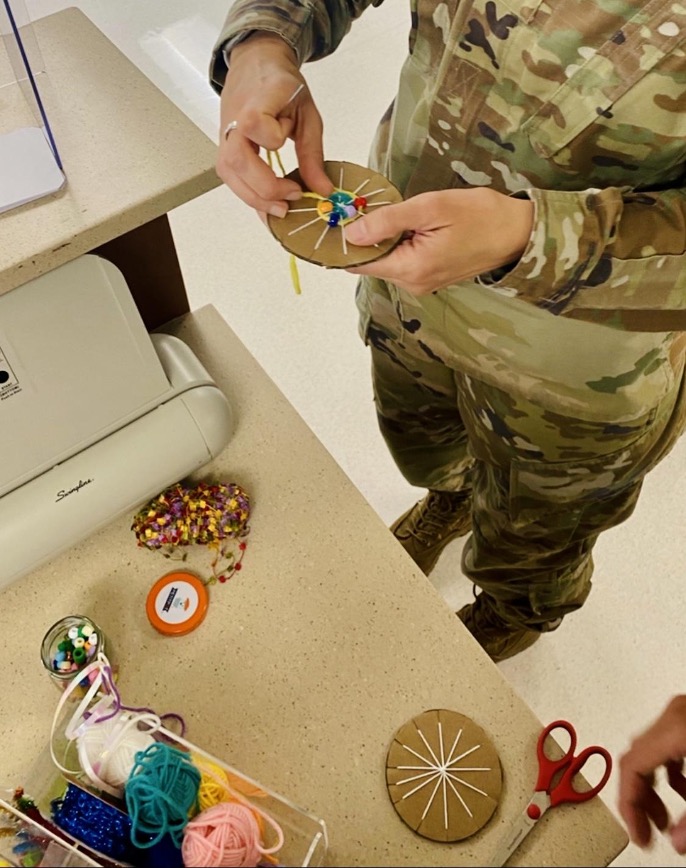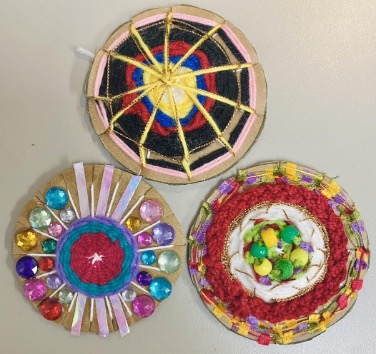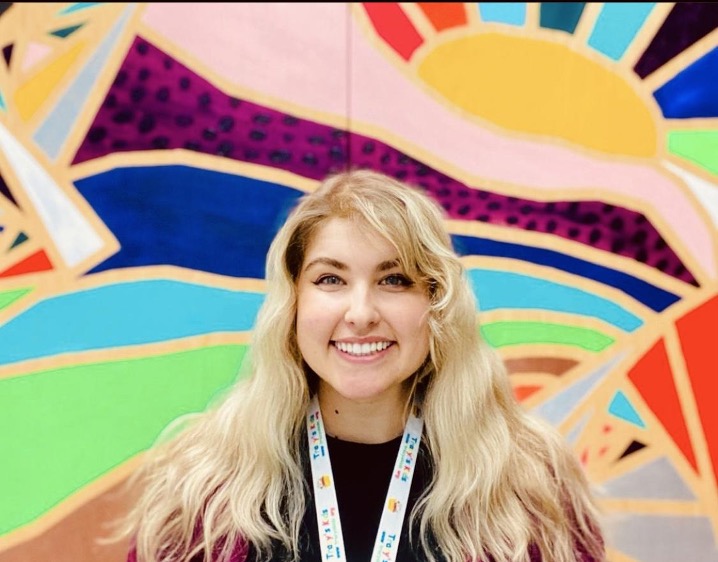April 4, 2023 | By Sara Cantrell, MA, ATR-P
As art therapists, many of us work as a member of the interdisciplinary team in organizations such as hospitals, schools, and agencies. Sometimes art therapists need to use conflict resolution skills to effectively address challenges within the team. In this blog, I share my story of how I used a relational approach to find solutions for my team in order to keep art therapy appropriate and alive for clients.
The Presenting Issue: The Art Cabinet

In my four-month transition from intern to full-time art therapist at a military hospital, the outpatient pediatric hematology oncology clinic found itself flush with art materials but no art therapist. After returning, I quickly learned how the staff, mainly nurses, kept the art-making alive, distributing various art materials to patients and additional changes. However, boundaries around the art cabinet set during my internship were no longer in place. Boundaries like, asking the art therapist for assistance retrieving materials from the cabinet, distribution limits on rare materials, and returning reusable materials. I observed the staff adopting additional duties to their workload, patients’ requests for art, and independent patient and parental trips to the art cabinet to freely take materials.
Despite my appreciation for staff efforts keeping art as a part of patients’ experience, I felt panic at losing boundaries around the art cabinet, noting the difficulty to reinforce them and how quickly they were dissolved in my absence. I feared, thinking of supply funding; there is not endless money for our art supplies, some are expensive and for specific events. I thought, what if all of it is gone?
Additionally, I felt concerned for the patients’ and families’ safety entering the art cabinet alone. Without knowledge of materials or safety precautions, there is opportunity for misusing materials for patients’ developmental level, risking emotional dysregulation or regression.
A Relational Approach as a Conflict Resolution Model
My instinct was to provide an in-service to staff with a re-education opportunity about art therapy, safety precautions, and its essentialness in the medical setting. However, after receiving advice from other art therapists, I moved towards a relational approach to understand what these four months were like for staff managing art distribution without an art therapist. A relational approach focuses on interacting with others using values such as respect, inclusiveness, honesty and humility. This approach ensures that all members feel heard, understood, and appreciated in the problem-solving process. I feared that by changing this system by my own will, I would make staff efforts seem unappreciated, limiting their ability to engage in the joys of art as a part of the clinic experience.
To prepare, I set intentions and goals:
Build mutual respect and understanding between our experiences and our concerns
Make sure team members feel respected and understood
See each other’s position
Set out the facts and explore the options together
Explore art therapeutic space vs. art and play space and what is needed in each
Finding Solutions Together
After speaking to the nurses, learning about their experience, I thanked them for helping patients during this time and continuing art. I expressed my desire to reset boundaries on the art cabinet and offered to create an alternate space where they could access and distribute materials. We identified some commonly used and universally beneficial materials for all age ranges of pediatric patients seen in the clinic. We decided to utilize an open shelving unit as a drop station for these materials that nurses and patients can grab when needed. Additionally nurses and corpsmen were asked to help redirect patients or parents going into the art cabinet if I was unavailable, to which they happily said yes.

The Outcome
The drop station was running smoothly only a few weeks after our conversation, and the art cabinet had reinstated boundaries. A nurse also asked if I could create bags with art supplies for specific patients when I knew I would be absent, a welcome suggestion that was implemented.
I offered our staff an attendance-optional, in-service about art therapy. Many staff members, new and old, participated in the in-service, asking questions, and becoming immersed in art materials, creating their own loom weavings. Staff had the option to donate their mini looms to a staff art piece which now resides hung on the wall in the clinic.
Through this, I was able to honor the existing culture to facilitate more inclusivity and collaboration, prioritizing the needs of patients first, as well as attending to the clinic staff. In the end, we figured out ways to work together to provide the best care possible while simultaneously creating time to have self-care as a team.
A Lt.Col. responds to the art making, “Sometimes we forget to take care of ourselves; I love when art therapy is offered to us because it helps and reminds me to attend to myself more.”



Artwork created by the Pediatric Hematology Oncology staff in response to the art therapy in-service. Each loom represents their individual experiences working in the clinic. Looms were then donated to be combined as a team art piece now hanging in the clinic.
About Sara Cantrell

Sara Cantrell, MA, ATR-P, is a recent graduate of George Washington University’s Art Therapy program and is currently the art therapist for a Pediatric Hematology/Oncology clinic at a Military Hospital. She is passionate about assisting her pediatric patients through processing their diagnosis and treatment procedures using art as well as creating space for their voices to be heard and helping advocate on their behalf. Sara provides art therapy services for patients as young as 2 years old.
